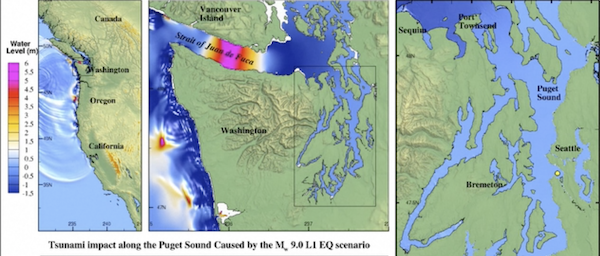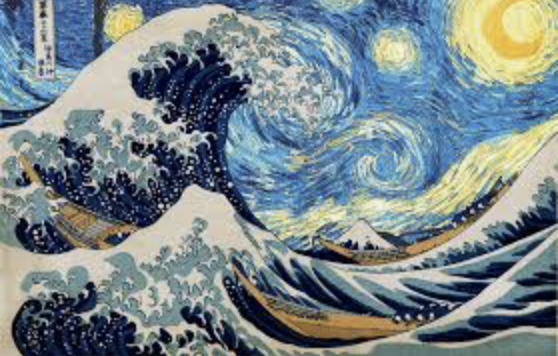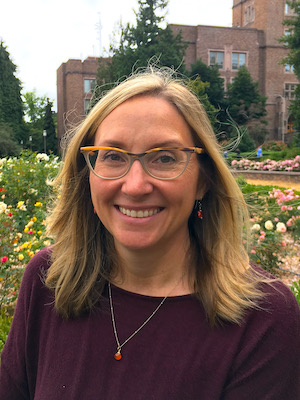
Tsunamis in Washington State: Evidence for local and Cascadian earthquakes

Washington’s tsunami sources include the obvious Cascadia subduction zone, plus local crustal faults, tsunamigenic slope failures, and distant source tsunamis (Alaska, Japan, Chile). The longest geologic record of past tsunamis is at Discovery Bay, just 10 miles southwest of Port Townsend. At least nine tsunami deposits dating back 2,500 years are preserved as layers of fine sand in otherwise peaty tidal-marsh deposits, whereas only five Cascadia earthquakes were recorded in the estuaries of southwest Washington during that same time span. This suggests that other tsunami sources created erosive and flooding tsunamis in Discovery Bay. The youngest tsunami deposit at Discovery Bay is probably from the 1700 A.D. Cascadia earthquake. The next older deposit is well dated at 1320–1390 A.D. However, there is no geologic evidence for a late fourteenth-century earthquake or tsunami in any of the southwest Washington estuaries, so this tsunami may represent a smaller Cascadia earthquake that was limited to the northern end of the subduction zone.
Potential tsunami sources can be tested using new high-resolution tsunami modeling for specific sites. At Discovery Bay, tsunami models show that a large Alaska-Aleutian subduction zone earthquake could cause flooding at Discovery Bay, whereas models of the Seattle fault do not. Recently published maps and video animations for a M9 Cascades subduction scenario will be shown for Port Townsend and Port Angeles.
 Dr. Carrie Garrison-Laney is a tsunami hazards specialist at Washington Sea Grant at the University of Washington and a liaison to the National Center for Tsunami Research at the Pacific Marine Environmental Laboratory at NOAA in Seattle. Carrie’s work on tsunami hazards in Puget Sound includes identifying and dating paleo-tsunami deposits, numerical modeling of tsunami inundation, and the use of intertidal paleoecology to study past tsunami events. Carrie also participates in a variety of outreach activities, including Washington’s Tsunami Roadshow. In her spare time, she helps her two daughters navigate high school and college
Dr. Carrie Garrison-Laney is a tsunami hazards specialist at Washington Sea Grant at the University of Washington and a liaison to the National Center for Tsunami Research at the Pacific Marine Environmental Laboratory at NOAA in Seattle. Carrie’s work on tsunami hazards in Puget Sound includes identifying and dating paleo-tsunami deposits, numerical modeling of tsunami inundation, and the use of intertidal paleoecology to study past tsunami events. Carrie also participates in a variety of outreach activities, including Washington’s Tsunami Roadshow. In her spare time, she helps her two daughters navigate high school and college
